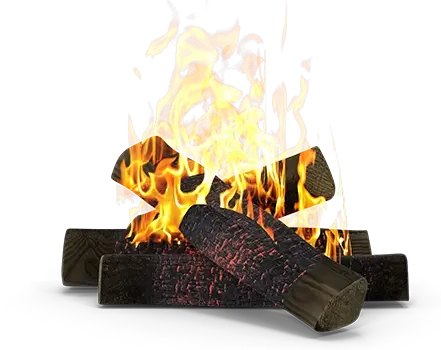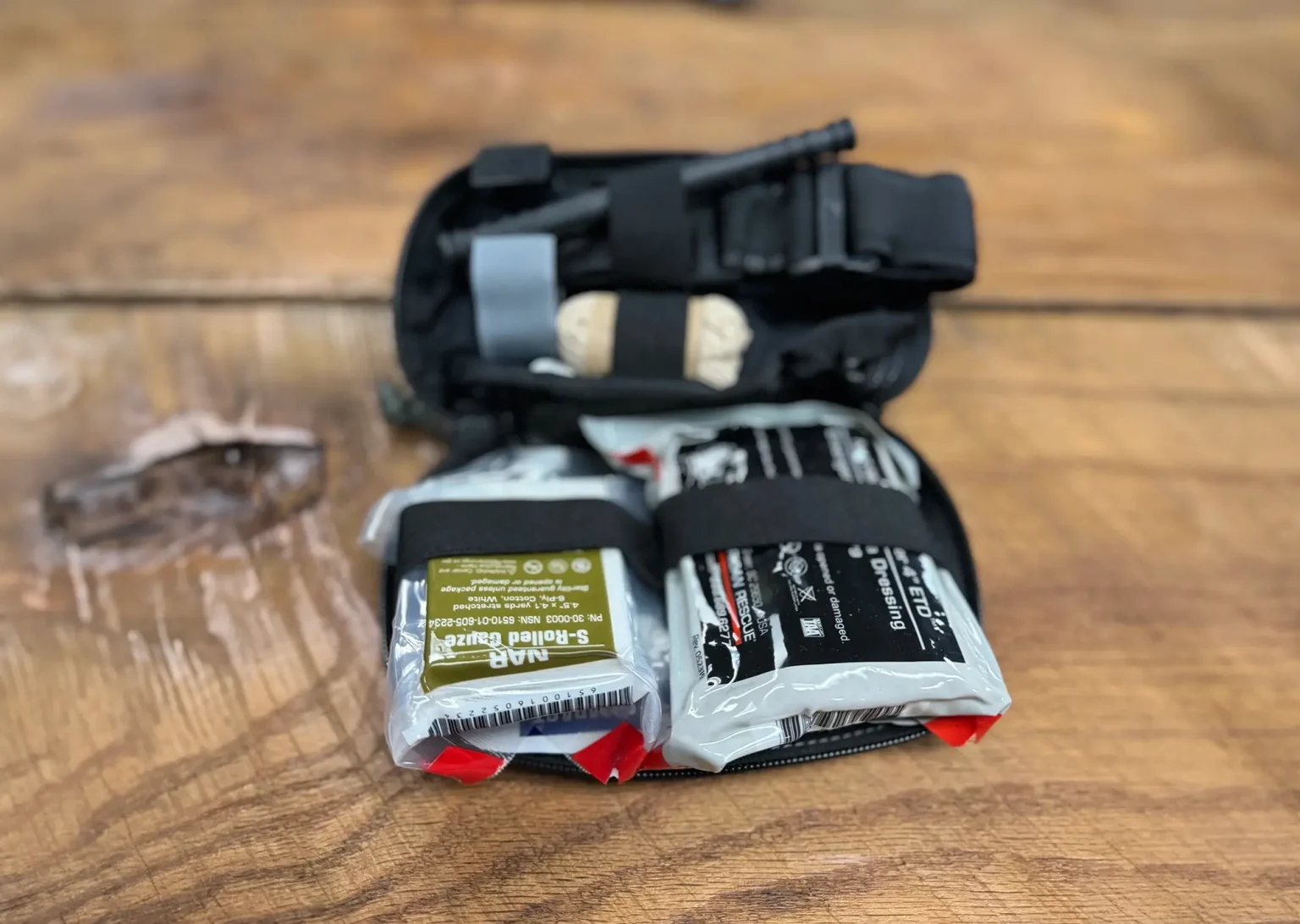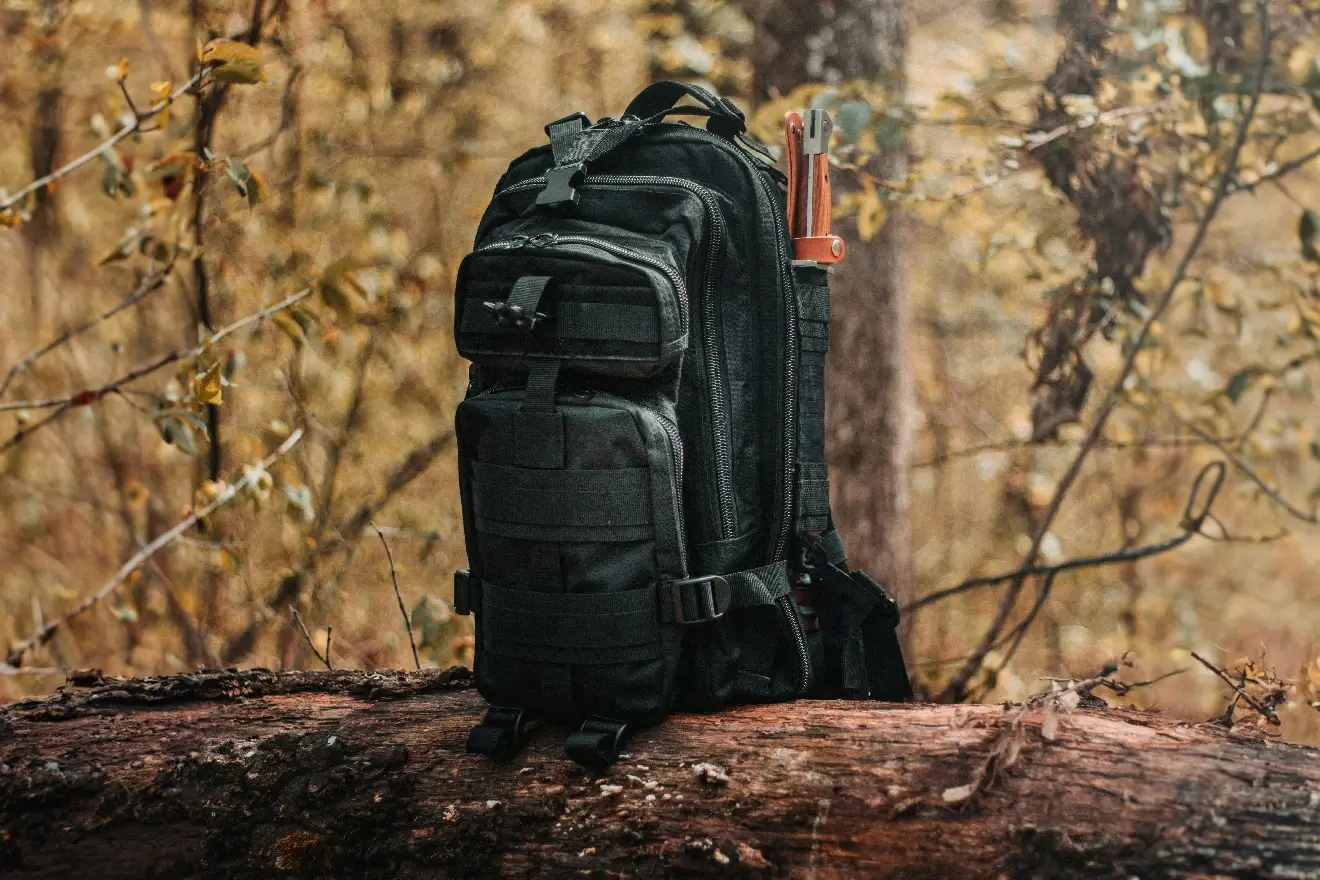An IFAK is an “Individual First Aid Kit” and they are much different than what you would consider a typical first aid kit which is standard in workplaces, schools, or even vehicles. IFAKs tend to have a more robust selection of life-saving equipment as they are meant to deal with massive trauma injuries.
BASIC IFAK LIST
Here is a list of the bare necessities of what the most basic IFAKs should include in the informational sections:
- Tourniquet
- Packing Gauze
- Trauma Bandage
- Chest seals
- Gloves
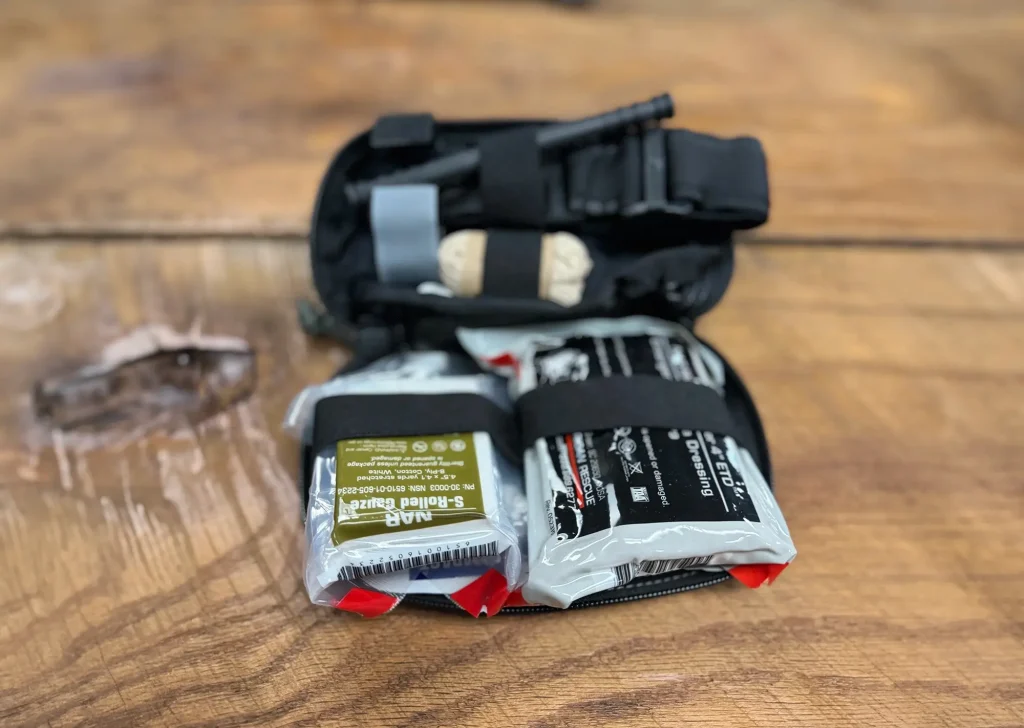
Tourniquet
What is a tourniquet, and what are its uses?
Tourniquets, over the years of use, have been proven to increase the ability of a severe trauma patient to stay alive 89% more than patients who are rushed to the hospital without one. They are easily the most essential item to have on you and train with because, at the very least, knowing how and when to use one can save your or someone else’s life. With that being said, Tourniquets are relatively simple to use.
A quick overview of using one: you only use them on the limbs and never put them on a joint; wherever the bleed is, you go high and tight; if you need another one, go above the first one, and you never remove them once placed, leave that to a professional because other issues can be caused by improperly removing them.
Once in place above the bleed, pull that strap as tight as possible and wrap it (if it’s velcro); then you crank down on the windlass until the bleeding stops or until it slows, which is where the extra one may come in if the situation calls for it. The last important thing is you want to make sure you get these; if you find yourself bleeding out, the last thing you want is the windlass to snap on you.
Packing Gauze
As the name implies, packing gauze is used to stuff and wrap wounds. If there is a hole where there shouldn’t be, like in your shoulder, you cram all that gauze into the open wound. You may need more gauze depending on the situation, and since it takes up little space, you can have a decent amount of it. Packing gauze is also helpful in covering wounds that a band-aid won’t cover, making a splint, and even a sling for an arm. There are many use cases for it; the best part is gauze is relatively cheap, and you can carry a lot.
Trauma Bandage
Trauma bandages are typically elastic bandages with a thick gauze padding built into them. It’s used for keeping pressure on wounds you can’t necessarily pack or on wounds where you’ve filled and need to secure. Even if you’re not bleeding, you can use it to fashion a splint if you have broken a bone. This is an item you wouldn’t mind having in your kit.
Chest Seals
As the name suggests, chest seals seal leaking holes in the chest and back. Leaking, as in, air is escaping when you know it shouldn’t. The seals are simple to use; you find a hole in the chest, and, if applicable, in the back, you peel them off and smack the suckers right over it.
You would want to ensure it has a solid seal on the body. Hairier chests may prove to be more challenging. There are two types of chest seals: vented and non-vented. The vented seals make monitoring the wounded easier, but the non-vented seals make it more hands-on. Suppose you are using non-vented chest seals. In that case, you need to keep an eye on the wounded and ensure they are not developing hypoxia, respiratory distress, hypotension, or tension pneumothorax. Those can be killers. So, if you want peace of mind, choosing the vented seals may be your best choice.
Gloves
This one is explanatory; you don’t want to catch a bad case of “I dead” from a bloodborne disease, but in some situations, you don’t necessarily have time to dawn the gloves of P.P.E. You always want to make sure you’re safe from whatever threat, big or small, because if you are dead or dying you can’t help anyone.
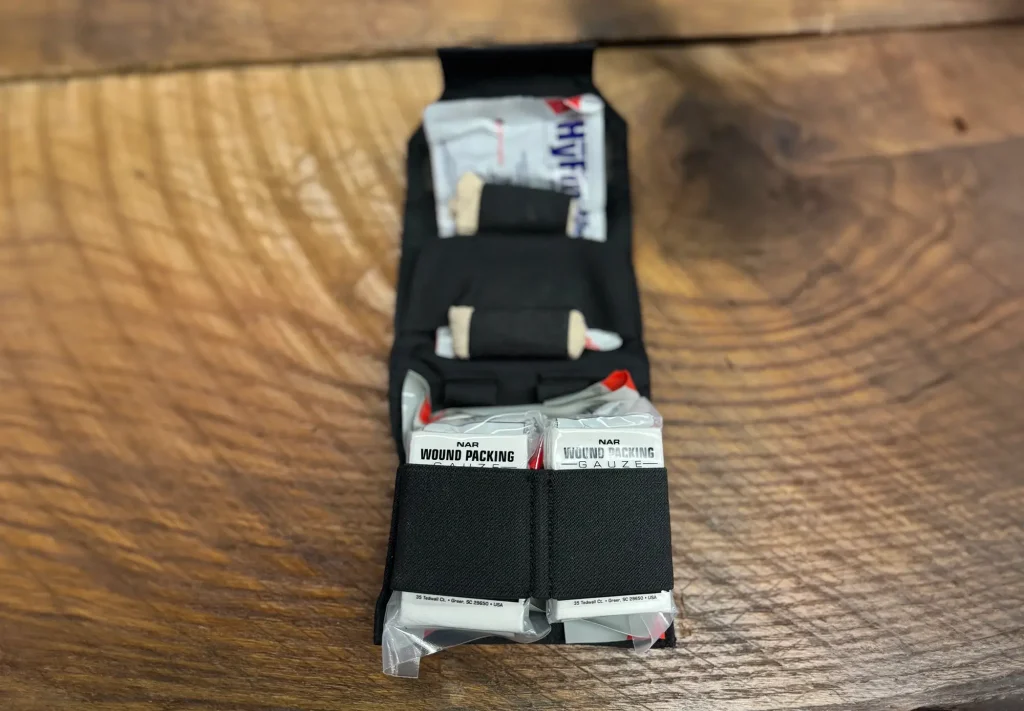
I.F.A.K.s aren’t as scary as they may seem. You can build your own that fits your specific use case or buy a prebuilt one from a trusted medical supplier such as North American Rescue, MyMedic, and others.
I suggest staying away from Amazon for a lot of medical supplies. Many of the tourniquets on there are fakes, and you would want to avoid putting your trust in them. Having the bare minimum I.F.A.K. can save you or someone else. Like anything else you do, repetition is key, which is why being able to access solid training will help this IFAK go a long way. Good training will make your ability to use these items more effectively and if you want you can expand on these and go even deeper down the rabbit hole of training and making a bigger IFAK.


